Occupation Bandleader, violinist Years active 1924–1977 | Name Guy Lombardo Role Musician | |
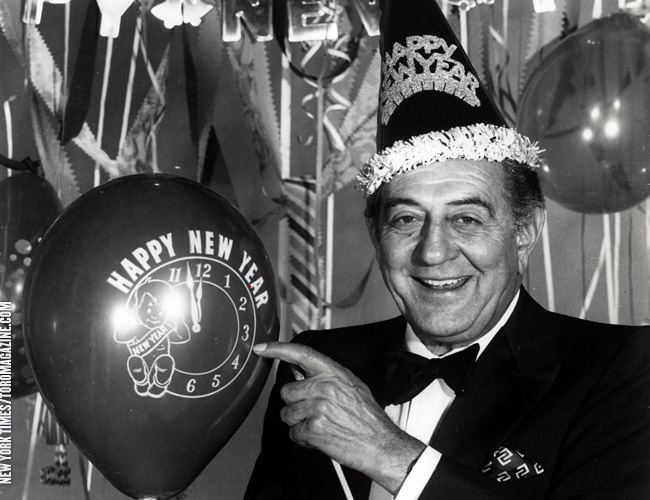 | ||
Full Name Gaetano Alberto Lombardo Spouse Lilliebell Glenn (m. 1926–1977) Siblings Carmen Lombardo, Lebert Lombardo, Victor Lombardo, Elaine Lombardo Albums The Twin Pianos, The Best Of Guy Lombardo Similar People Kenny Gardner, Louis Armstrong, Jimmy Dorsey, Tommy Dorsey, Bing Crosby | ||
Guy lombardo beloved 1928
Gaetano Alberto "Guy" Lombardo (June 19, 1902 – November 5, 1977) was a Canadian-American bandleader and violinist of Italian descent.
Contents
- Guy lombardo beloved 1928
- Guy lombardo i m putting all my eggs in one basket 1936
- Early life
- Royal Canadians
- New Years Eve radio and TV programs
- Other radio
- Film
- Other pursuits
- Death
- Tributes
- Guy Lombardo museum
- Singles discography
- Columbia
- Brunswick
- Decca 19341935
- Decca 19391952
- Albums discography
- References
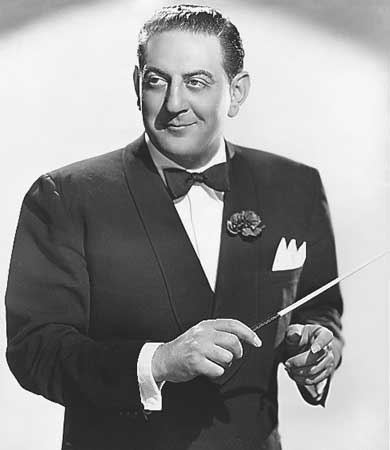
He formed the Royal Canadians in 1924 with his brothers Carmen, Lebert, and Victor, and other musicians from his hometown. They billed themselves as creating "the sweetest music this side of Heaven". The Lombardos are believed to have sold between 100 and 300 million records during their lifetimes, many featuring the band's lead singer, Kenny Gardner.
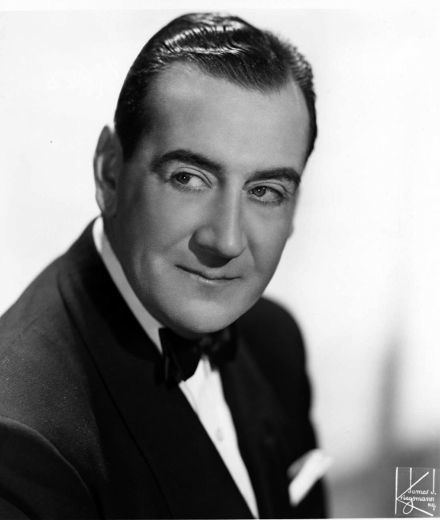
Guy lombardo i m putting all my eggs in one basket 1936
Early life
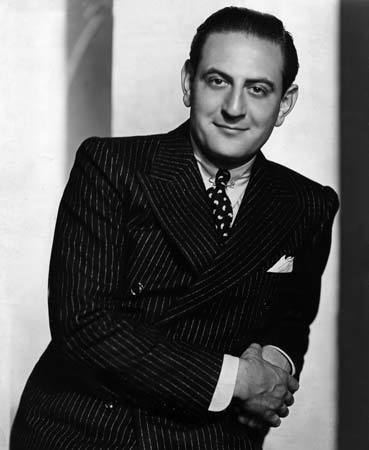
Lombardo was born in London, Ontario, to Italian immigrants, Gaetano Sr. and Lena Lombardo. His father, who had worked as a tailor, was an amateur singer with a baritone voice and had four of his five sons learn to play instruments so they could accompany him. Lombardo and his brothers formed their first orchestra while still in grammar school and rehearsed in the back of their father's tailor shop. Lombardo first performed in public with his brother Carmen at a church lawn party in London in 1914. His first recording session took place where trumpeter Bix Beiderbecke made his legendary recordings—in Richmond, Indiana, at the Gennett Studios—both during early 1924.
Royal Canadians
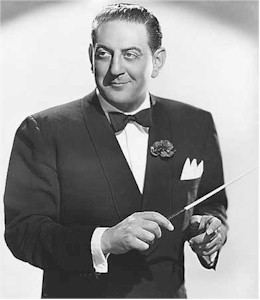
After that solitary Gennett session, they recorded two sessions for Brunswick, a rejected session in Cleveland in late 1926 and an issued session for Vocalion in early 1927. The band then signed to Columbia and recorded prolifically between 1927 and 1931. In early 1932, they signed to Brunswick and continued their success through 1934 when they signed to Decca (1934–35). They then signed to Victor in later 1935 and stayed until the middle of 1938 when again they signed to Decca.
In 1938, Lombardo became a naturalized citizen of the United States.
Although Lombardo's "sweet" big-band music was viewed by some in the jazz and big-band community of the day as "boring, mainstream pap", trumpeter Louis Armstrong regularly named Lombardo's band his favorite orchestra.
New Year's Eve radio and TV programs
Lombardo is remembered for almost a half-century of New Year's Eve big band remotes, first on radio, then on television. His orchestra played at the Roosevelt Grill in the Roosevelt Hotel in New York City from 1929 ("radio's first nationwide New Year's eve broadcast") to 1959, and from then until 1976 at the Waldorf Astoria Hotel. Live broadcasts (and later telecasts) of their performances were a large part of New Year's celebrations across North America; millions of people watched the show with friends at house parties. Because of this popularity, Lombardo was called "Mr. New Year's Eve".
The band's first New Year's Eve radio broadcast was in 1928; within a few years, they were heard live on the CBS Radio Network before midnight Eastern Time, then on the NBC Radio Network after midnight.
On December 31, 1956, the Lombardo band did their first New Year's TV special on CBS; the program (and Lombardo's 20 subsequent New Year's Eve TV shows) included a live segment from Times Square. Although CBS carried most of the Lombardo New Year's specials, there were a few years in the late 1960s and early 1970s when the special was syndicated live to individual TV stations instead of broadcast on a network. By the middle 1970s, the Lombardo TV show was facing competition, especially for younger viewers, from Dick Clark's New Year's Rockin' Eve, but Lombardo remained popular among viewers, especially older ones.
Even after Lombardo's death, the band's New Year's specials continued for two more years on CBS. The Royal Canadians' recording of the traditional song "Auld Lang Syne" still plays as the first song of the new year in Times Square.
Other radio
Beginning June 14, 1953, Guy Lombardo and his orchestra had Guy Lombardo Time, the summer replacement for Jack Benny's radio program.
Film
Lombardo and his orchestra were part of the 1934 film Many Happy Returns.
Other pursuits
Lombardo was also an important figure in hydroplane speedboat racing, winning the Gold Cup in 1946 in his record-breaking speedboat, Tempo VI, designed and built by John L. Hacker. He then went on to win the Ford Memorial competition in 1948 and the President's Cup and the Silver Cup in 1952. From 1946 to 1949, he was the reigning US national champion. Before his retirement from the sport in the late 1950s, he had won every trophy in the field. In 1959 Lombardo was attempting a run on the absolute water speed record with the jet engine powered Tempo Alcoa when it was destroyed on a radio controlled test run doing over 250 miles per hour (400 km/h). After the destruction of the Tempo Alcoa, Lombardo retired from hydroplane racing. In 2002 he was inducted into the Canadian Motorsport Hall of Fame for his accomplishments.
Beginning in 1958, Lombardo endorsed the Guy Lombardo Royal Fleet, a line of fiberglass boats manufactured and sold by the United States Boat Corporation of Newark, New Jersey, a division of U.S. Pools Corporation. The boats were manufactured under license from Skagit Plastics of La Conner, Washington. The endeavor was short-lived and ended in 1961 with the closure of Skagit Plastics.
In his later years, Lombardo lived in Freeport, Long Island, New York where he kept Tempo, Tempo VI, and Tempo VII (built in 1955). He invested in a nearby seafood restaurant called "Liota's East Point House that eventually became "Guy Lombardo's East Point House." Lombardo became promoter and musical director of Jones Beach Marine Theater. The venue was built with him in mind by Robert Moses, a fan of Lombardo. One of Lombardo's productions at Jones Beach was Paradise Island in 1961. His final production there was the 1977 staging of Finian's Rainbow with Christopher Hewett in the title role.
Death
On November 5, 1977, Lombardo suffered a fatal heart attack. Another source says he died "of a lung ailment." His wife was at his bedside when he died in Houston Methodist Hospital.
Victor Lombardo took over the band briefly but could not maintain it. When Lebert Lombardo severed his ties in 1979 the group dissolved. The orchestra was later revived in 1989 by Al Pierson, playing a mix of nostalgic tunes and modern arrangements.
Tributes
Lombardo was featured on a postage stamp issued on December 17, 1999, as part of Canada Post's Millennium Collection.
Guy Lombardo has three stars on the Hollywood Walk of Fame in Los Angeles.
In 2002, he was inducted into Canada's Walk of Fame and has a star on its Walk of Fame in Toronto. Lombardo was inducted into the Long Island Music Hall of Fame in 2007.
The home where Guy Lombardo and his siblings grew up is still standing in London, Ontario, at 202 Simcoe Street. A plaque to the Lombardos has been moved from the exterior wall of the Labatt Retail Store at Richmond and Horton streets in London to the store's entranceway off the parking lot, denoting the site of a subsequent home of the Lombardos.
In his later home of Freeport, New York, there is Guy Lombardo Avenue. There is a bridge named after Lombardo in London, Ontario near Wonderland Gardens, as well as Lombardo Avenue in north London near the University of Western Ontario.
The Guy Lombardo Society is dedicated to preserving the music and history of Guy Lombardo and His Royal Canadians.
Guy Lombardo museum
From the mid-1980s until 2007, there was a museum dedicated to Guy Lombardo in London, Ontario, near the intersection of Wonderland Road and Springbank Drive. In September 2007, lacking visitors and funding, the museum was closed. Although the city owned many of the exhibits, most of the collection can be found at the private home of former part-time curator Douglas Flood. City staff recommended that the museum not be reopened. In early 2015 Flood scheduled an auction of remaining items from the collection, under protest from members of the Lombardo family.
Lebert Lombardo's children also have a large collection of artifacts including photographs, record albums, sheet music, awards, and the band's framed first paycheck from 1918 in their homes and storage units in Fort Myers and Sanibel, Florida. They have tried to donate the collection to various universities and museums but have had no takers. The Library of Congress has a collection of Lombardo films.
Singles discography
Before the start of Billboard magazine's top 40 charts in 1940, Lombardo had over 140 hits from 1927–1940, including twenty-one No. 1 hits. The five biggest were "Charmaine", "It Looks Like Rain in Cherry Blossom Lane", "Boo-Hoo", "We Just Couldn't Say Goodbye", and "Red Sails in the Sunset."
The following singles made the "Top Ten" of the American Billboard singles charts from 1927–1940:
Columbia
The following appeared on the Columbia Records label:
Brunswick
The following appeared on the Brunswick Records label:
Decca (1934–1935)
The following appeared on the Decca Records label:
Decca (1939–1952)
The following singles made the "Top Ten" of the Billboard Singles Charts, 1940–1952.
Albums discography
DECCA 12" Albums:
Vocalion:
Capitol:
London Records:
Pickwick (Capitol) Budget Compilations / Reissues:
